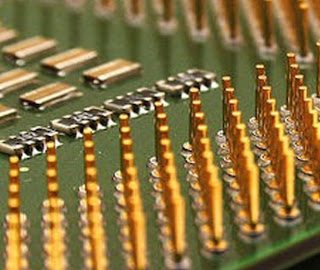In this project, researchers of the UAB Department of Physics and the Barcelona Institute of Materials Science (ICMAB-CSIC) have worked together to develop a new material based on supernets formed with two alternative layers, one made of silicon (Si) and the other of germanium (Ge) nanocrystals (quantum dots). In comparison to previous improvements, this project proposes to place the quantum dots in an uncorrelated fashion on consecutive layers. In other words, the dots on one layer would not be vertically aligned with those of the lower layer. This is achieved by introducing a small sub-layer of carbon between each layer of silicon and Ge nanodots, which hides the information of the quantum dots found on the lower levels. The main result of the uncorrelation between consecutive layers is the reduction in thermal conductivity, since it becomes more difficult to transport heat perpendicularly from the multilayers. Researchers were able to prove that this reduction reached a factor in excess of 2 when compared to structures with a vertical correlation of dots. This could greatly influence the design of new materials with improved thermoelectric characteristics and pave the way for the creation of nanofridges for common semiconductor devices, given that the structure is compatible with silicon technology.
Ge-based structures also could be used in high-temperature applications, such as in recovering heat generated in combustion processes and converting it to electrical energy.
A second and important aspect of this project is the theoretic study of the thermal properties this new material contains through a simple model based on the modification of the Fourier heat equation, which can predict its behaviour according to the dimensions of its characteristics. Thus with the help of results from previous studies, researchers were able to understand the theoretical foundations of thermal behaviour of this nanostructured material. ###
The research was coordinated by Javier Rodríguez, professor at the UAB Department of Physics, with the participation of Jaime Alvarez, Xavier Alvarez and David Jou, also from the UAB Department of Physics, as well as the collaboration of CSIC researchers Paul Lacharmoise, Alessandro Bernardi, Isabel Alonso, and ICREA researcher Alejandro Goñi. Part of the research was carried out at the Nanotechnology Lab of the MATGAS research centre located at the UAB Research Park. The research paper was recently published in Applied Physics Letters and research members are now working to develop a material with a good level of electric conductivity through controlled doping of the structure.
Contact: Javier Rodriguez javier.rodriguez@uab.cat 34-935-811-769 Universitat Autonoma de Barcelona
Tags: Nano or Nanotechnology and Nanotech















No comments:
Post a Comment